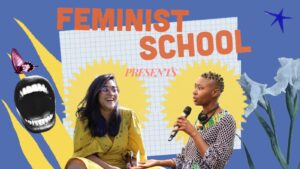We’re working with Oxfam America Cambodia to address gender injustice in Cambodia and Vietnam and the vehicle for this work is a Gender Action Learning (GAL) Process with four organizations that work in natural resource management and extractive industries. These organizations are as diverse as Oxfam America Cambodia, People and Nature Reconciliation (Vietnam), Highlanders’ Association of Cambodia, and Save Cambodia Wildlife.
We started in February and recently, we held the second of three gender action learning workshops in Hanoi. The question that framed our work was: How can change teams (in Cambodia & Vietnam) accelerate their ability to integrate gender equality into their organizations and their programs so that they increase womens’ participation in decision making at home, in their communities and concerning the protection and use of their land?
What emerged was interesting. These are some of the things participants said:
- I gained a deeper and practical understanding of how gender identify and gender power relations are socially constructed, and are fluid depending on the circumstances.
- I’m beginning to understand how the power you have is both what you see as your own power within, and is conferred on me differently by different people.
- So while I see myself as powerful in certain circumstances, others see me as powerless.
- Asking questions and heart listening deepens learning and makes new action possible
- I learned some practical ways of using questions to help analyze how gender is playing out in various situations.
- I learned that gender inequality is more deeply ingrained and harder to change than I originally thought.
My own lessons were as surprising to me as perhaps the participants’ lessons were to them. First, the Gender at Work Framework and other Gender at Work processes (such as peer learning and body work) are most useful when used to create a field of play for conversation and meaning making, rather than as a way to get to the answers. Whether using the framework or peer learning, these approaches provide opportunities for people to go deeply into their own thinking and cultural norms, traditional practices, gender power relations and so on. Coming up with a gender analysis based on the Gender at Work framework, or a polished plan for an initiative to address gender-based violence in the home, are important.
Perhaps more important is people beginning to make their thinking clear to themselves and to others so that they can collectively accelerate the achievement of results they want around gender inequality. Conversations about gender, identity, sexuality and so on create a field participants step into when they leave the workshop, in their homes, in their organizations, in their communities. It is from this field that they can open up explorations with others about the tough problems of changing traditional beliefs that keep women from, for example, gaining decision making power and ultimately seeing themselves as having the power to create a better life for themselves and other women. People leave these conversations with greater clarity on what gender inequality is, and they start thinking and talking differently than they did before. Together they create a field where better results can happen, though specific results may take more time than we have for the project to become visible.
At the beginning of the workshop is when it’s important to create a shared understanding about the terms we use. For example, when people talk about future-oriented ideas for action they are frame these ideas as about something they can actually test, as something that is specific and doable. Getting to a shared understanding about ending gender-based violence in the home, for example, involves questioning what people mean by gender-based violence, offering competing ideas on what gender-based violence could mean, and refusing to accept fuzzy language or generalizations. Getting clarity on terms is an art – the way an artist uses their tools while carrying out their particular craft or art.
Ultimately, the greatest power people gain from these workshops is learning the art of learning. This goes beyond correcting errors or injustices by applying a framework; it goes beyond surfacing assumptions and recombining elements of a solution in a way that addresses the current context. Both are important, but they are not enough to change patriarchal norms. My hypothesis is that if we are to achieve lasting positive change for gender justice, it is critical to both increase a group’s ability to accelerate the achievement of gender justice and to use their learning in addressing gender justice to learn how to learn so that they can effectively address new problems and opportunities.
by RAY GORDEZKY



